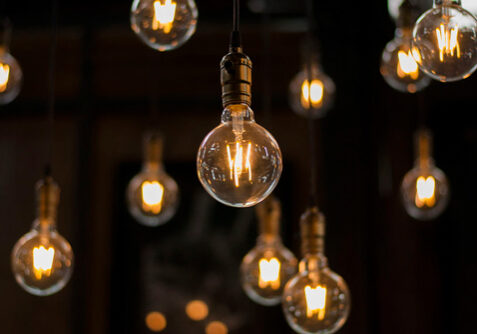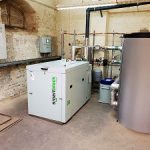Which type of CHP is better? Heat-led or electricity-led?
CHP units are designed to be either electricity-led or heat-led. These may differ in design, but not in technology.
As the name suggests, heat-led CHP units are adapted to the heat demand, whereas an electricity-led CHP is adapted to the building’s electricity demand. The choice of which is the right type of CHP unit for you depends on its use case as well as the building’s heat/electricity demand. As the production of electricity and heat is coupled in a fixed ratio, the energy (which is virtually a by-product) should also always be put to good use – which also adds to the CHP unit’s efficient operation. Heat-led CHPs are the usual choice in the planning stage.
Worth knowing: what happens if the full load hours are not reached
Whichever type of CHP unit you choose, it should always reach the required full load hours. If not, they do not operate economically, experience more wear and tear, and need more maintenance than is usual.
CHP units are designed to run as many hours as possible and should also cover most of the heat demand, but without producing too much heat. Ideally, the unit itself uses all of the electricity that it generates.
The output of heat-led types is based on the building’s heat demand.
The output of electricity-led types is based on the building’s electricity demand.
Comparison: electricity-led, heat-led and grid-led
| Heat-led mode of operation | Electricity-led mode of operation |
Grid-led mode of operation | |
|---|---|---|---|
| CHP output type | Depends on the heat demand | Depends on the electricity demand | Depends on demands from the grid |
| Usage | Most popular type | Less popular, not particularly economical | In virtual power plants (interconnected networks of CHP units) |
| Electrical and heat generation | Heat is produced as soon as it is needed on site. Electricity is produced only when heat is needed |
Electricity is produced when it is needed on site. Heat is produced only when electricity is needed |
Electricity is produced according to demand on the grid. Heat is produced only when there is a demand for electricity |
| Benefits |
|
|
|
| Disadvantages |
|
|
|
| Economic use | To supply heating, single- and two-family homes, businesses and industrial plants | In isolated operation, connected to district heating systems, runs on renewable raw materials | In virtual grids |

That’s why most CHP units are designed as heat-led units
If a heat-led CHP unit produces too much electricity, the electricity can simply be fed into the grid, for which the operator is paid a fee. On the other hand, if an electricity- led CHP unit produces too much heat, the heat can only be stored temporarily and to a limited extent or, in the rarest cases, supplied to a district heating scheme.
This means it’s easier to get rid of any unused electricity than of any unused heat. Moreover, a building’s heat demand fluctuates less throughout the day than its electricity demand. That’s why CHP units are usually aligned with the building’s heat demand.
More about CHPs
More about CHPs




